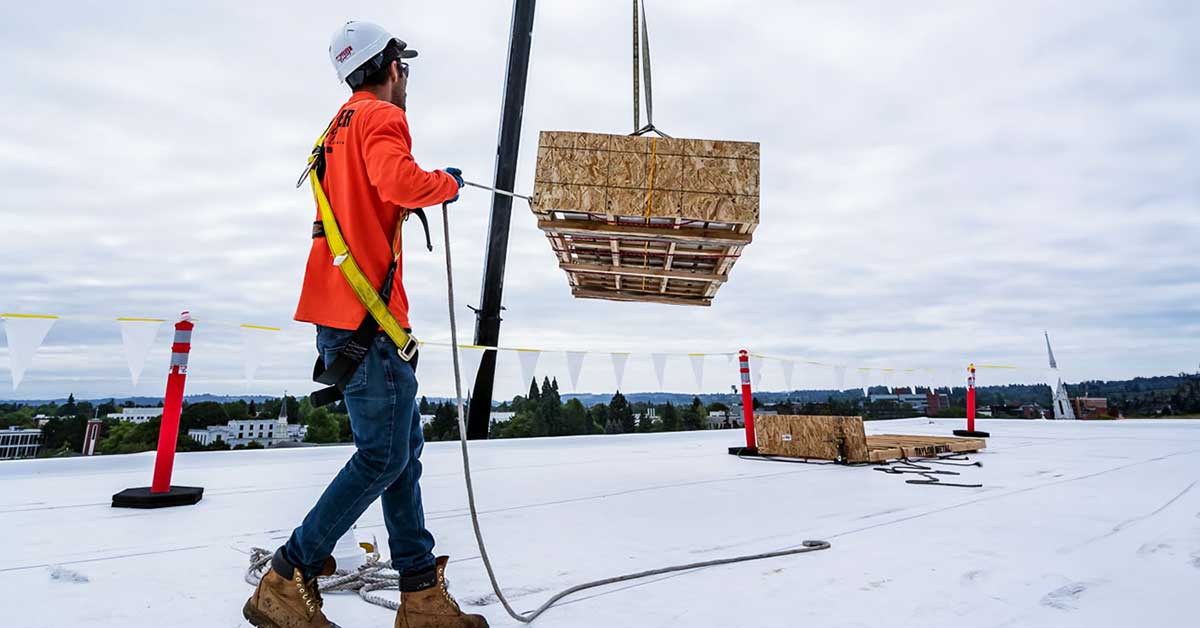For many years, flat or low-slope roofs were a maintenance problem in the rainy northwest. The built-up asphalt roofing used in the past wasn’t long-lasting and often leaked. But today that’s all changed. Low slope roofing systems now use a membrane made from a continuous roll of material such as PVC (polyvinyl chloride) or TPO (thermoplastic olefin). When professionally installed, these low-slope roofs provide good drainage, as well as energy savings, fire resistance, and long life.
Another advantage is the color of the roof. If you’ve ever climbed into the attic of an asphalt-roofed home on a warm day, you know how much heat builds up in the attic. This is not the case with a light-colored flat roof. If you choose a light-colored vinyl roof, the heat from the sun is reflected, helping to keep the house cool.
A white membrane roofing system can reduce your energy consumption by reflecting up to 90% of the heat that normally enters a home through the roof. Both PVC and TPO membranes are Energy Star rated and Cool Roof Rating Council approved.
Fire resistance is a big plus with membrane roofing systems. When combined with appropriate coverboards and insulation, they have up to a Class “A” rating for fire resistance. While many traditional roofing materials fuel fires, PVC and TPO membranes resist flames.
PVC membranes have a proven track record of performance for residential, commercial, and multi-use buildings. PVC is an excellent option for restaurants and commercial facilities because PVC is highly resistant to oil, grease, and other chemicals. Another advantage is that PVC membranes are incredibly easy to repair and maintain.
TPO membranes are a good choice for large commercial and industrial applications that need a cost-effective roofing solution. TPO stands up to rooftop traffic, tools, and equipment and offers excellent wind uplift resistance.
For commercial buildings, a flat roof system allows heating and cooling elements to be placed on the roof. Large mechanical equipment can also be stored on a low-slope roof, freeing up space inside the building.
Low slope roofs are more complex to install than steep-slope roofs. Flat roofs do not drain as easily as sloped roofs, so your roofer may need to install additional mechanisms to ensure proper drainage.
Understanding how a building is insulated and ventilated, as well as how the drainage and flashing systems integrate is essential to the proper performance of a low-slope system.
Our experts at Pfeifer Roofing can help design a system that fits your needs.

